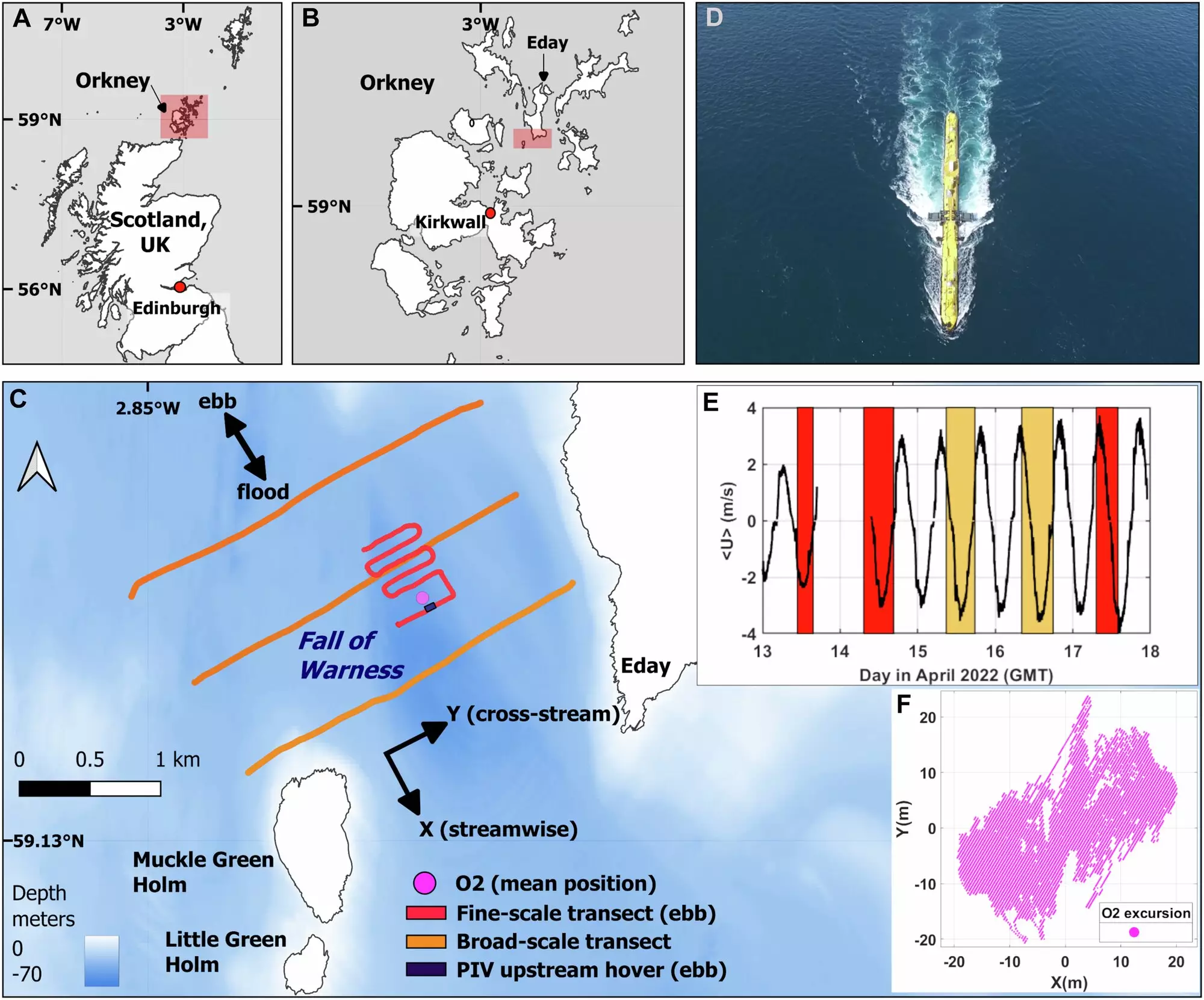In the quest for sustainable energy solutions, tidal power has emerged as one of the most promising renewable sources, particularly around the expansive UK coastline. As the energy landscape evolves, there is an increasing recognition that tidal installations can play a vital role in transitioning to cleaner energy systems. However, despite their great potential, the deployment of advanced tidal technology, specifically under challenging oceanic conditions, raises questions about the environmental impact and operational feasibility of these systems.
Orbital Marine Power’s O2 tidal turbine stands at the forefront of technological advancements in this arena. Floating on the surface of the sea and tethered to the seabed, the O2 is uniquely designed to harness tidal energy effectively. Measuring over 70 meters in length and directly connected to the grid through the European Marine Energy Centre (EMEC), this innovative system has the capacity to provide power for approximately 2,000 homes annually. However, as this turbine and others like it are installed, the question remains: how will such devices interact with the dynamic marine environment?
To uncover the answer, a research team utilized an integrated methodology combining drone aerial surveys with boat-based assessments in the Orkney Islands, known for their turbulent tidal currents exceeding 8 knots. This rigorous examination aimed not only to observe the performance of the O2 under real conditions but also to understand the impact of its operational wake on other potential turbine placements and surrounding marine ecosystems. By recognizing the intricate nature of tidal flows and their variations, this study sheds light on vital considerations that extend beyond mere energy production.
The findings revealed crucial insights regarding the placement of tidal turbines. The team underscored the necessity of conducting site-specific assessments to better understand the marine environment, which can substantially differ from computer simulations. This approach offers a framework for addressing uncertainties about how tidal turbines will affect and be affected by natural habitats.
The implications of these findings extend beyond engineering and energy production; they raise critical ethical and ecological considerations. Previous studies have indicated that turbine wakes can serve as foraging hotspots for local seabird populations, potentially enhancing biodiversity in the area. However, there is an inherent risk that densely packed turbine arrays may inhibit the movement of marine fauna, including vulnerable species like orcas, which were observed during one of the drone surveys.
This intersection between renewable energy deployment and marine life highlights the necessity of fostering a sustainable relationship between technology and nature. The efforts made by this research team underscore the importance of addressing both the environmental impacts of tidal energy and the operational efficiencies required for successful deployment.
Despite the promising findings, the tidal energy sector continues to confront significant challenges. Among them are the financial implications of scaling technologies, the need for adequate grid infrastructure to handle increased energy input, and ensuring that turbines remain functional amidst harsh marine conditions. The advancements in field measurement techniques proposed by the researchers aim to contribute significantly to alleviating these obstacles, paving the way for long-term reliability and sustainability of tidal technologies.
As the UK gears up for a future in diversified offshore renewable energy solutions—ranging from floating wind farms to advanced tidal installations—the integration of cutting-edge research and community involvement becomes increasingly indispensable. Senior scientists, such as Shaun Fraser from the University of the Highlands and Islands (UHI), emphasize the importance of this research for local communities and industries, especially as more developments in marine renewable energy take place in nearby regions.
To harness the full benefits of tidal energy, the industry must prioritize the alignment of real-world environmental conditions with technological advancements. As highlighted by experts like Professor Alex Nimmo Smith, assessments that adequately consider the unique, complex marine landscapes are vital for successes in the clean energy sector. The ongoing research will ultimately play a pivotal role in not just advancing tidal power but also ensuring its development coincides with the preservation of marine ecosystems.
While the promise of tidal energy as a reliable and sustainable resource is significant, the path to its realization is fraught with challenges. By leveraging innovative research approaches and fostering collaboration between various stakeholders, it is possible to unlock the full potential of tidal energy, ensuring it serves as a cornerstone of the UK’s clean energy future. The journey has just begun, but with the right strategies in place, tidal power can be navigated successfully into the future.


Leave a Reply